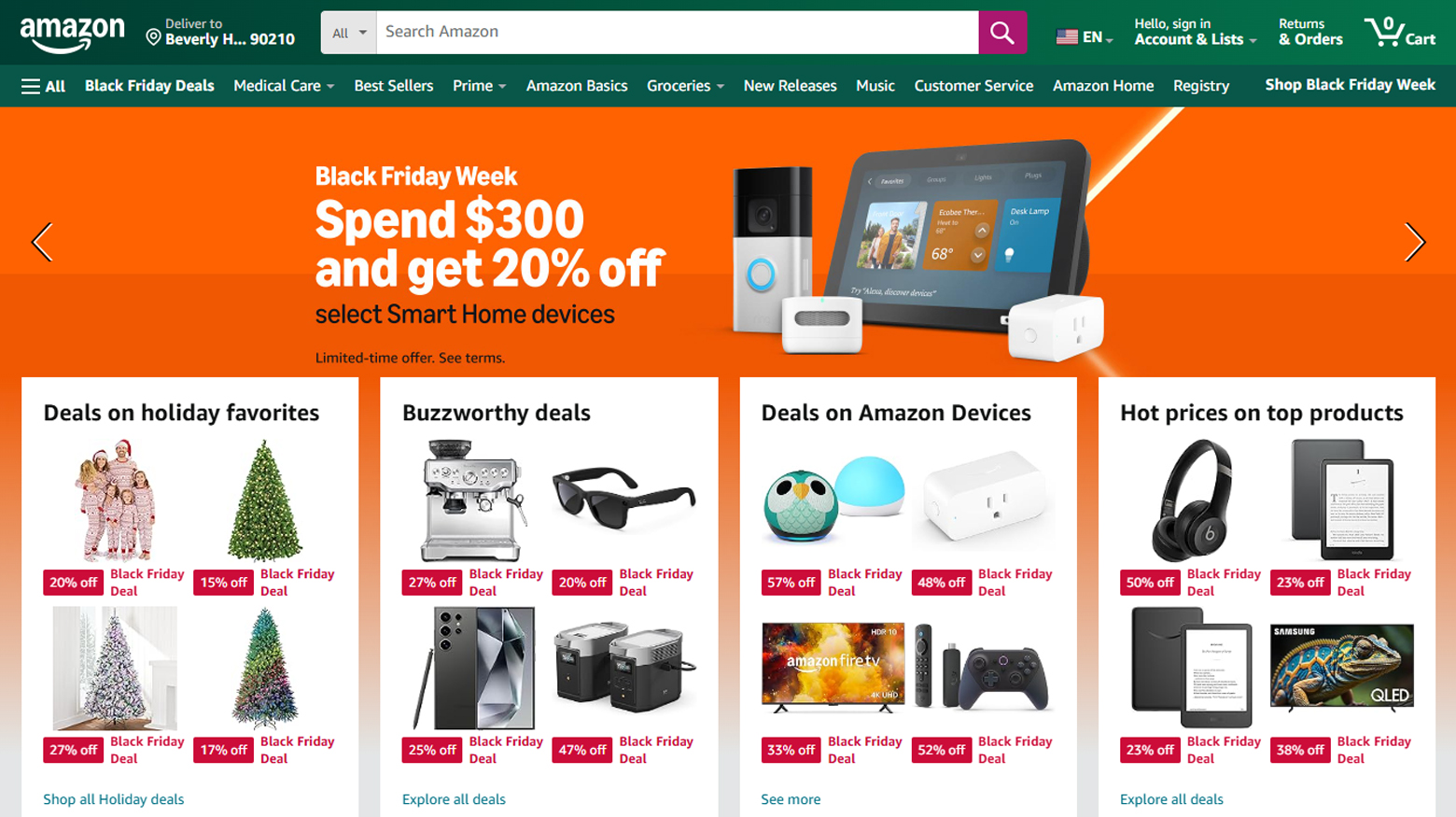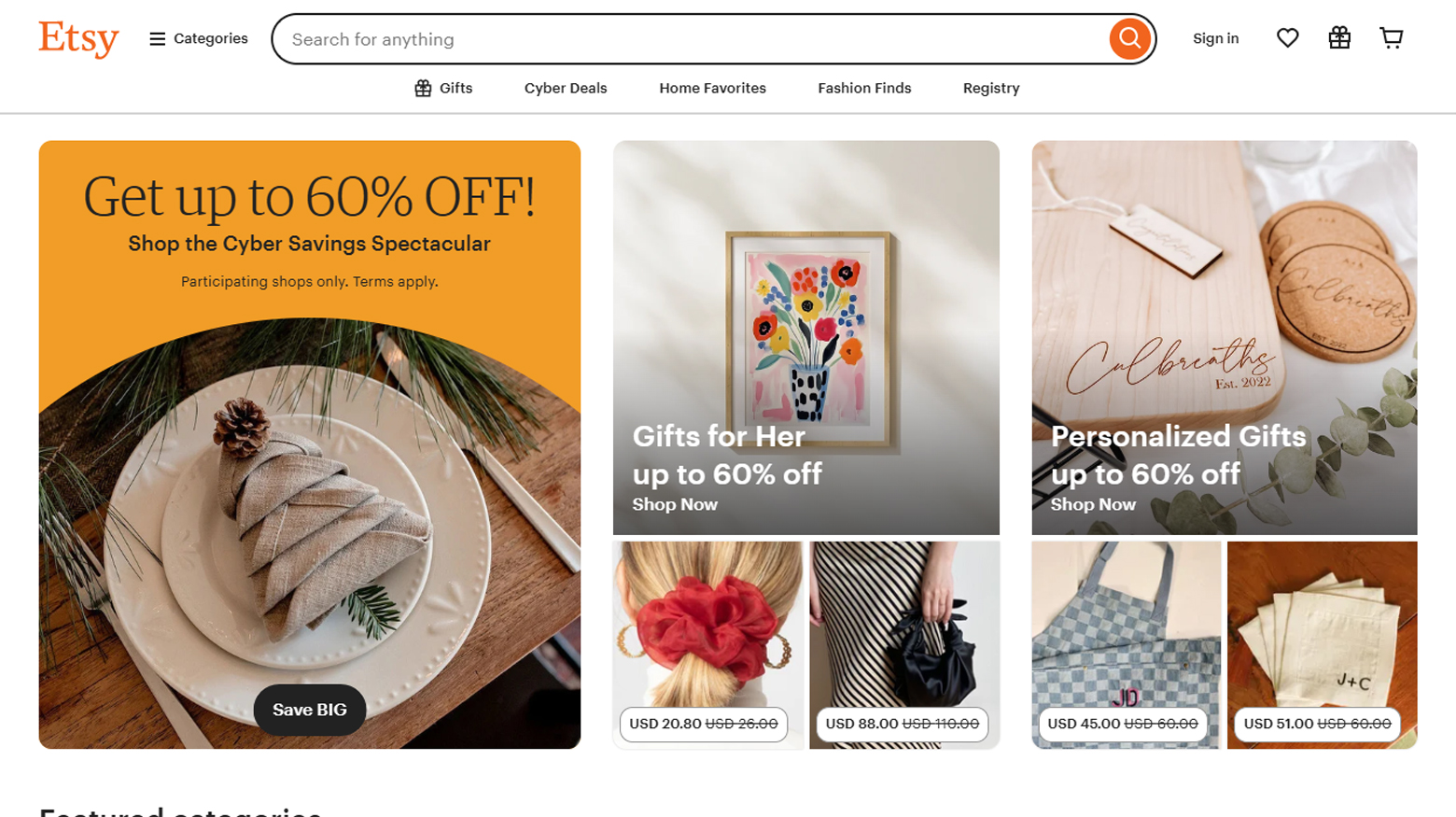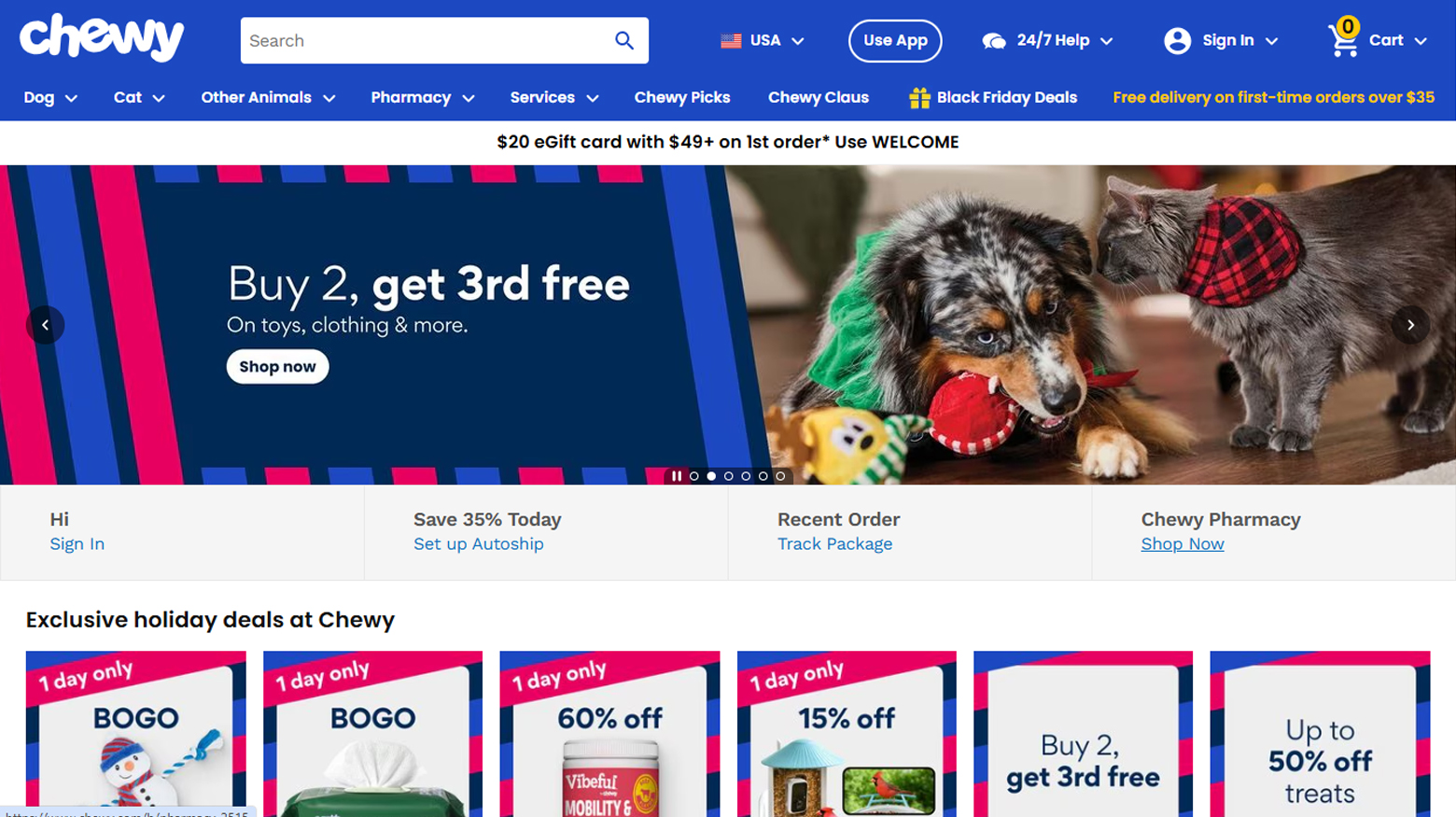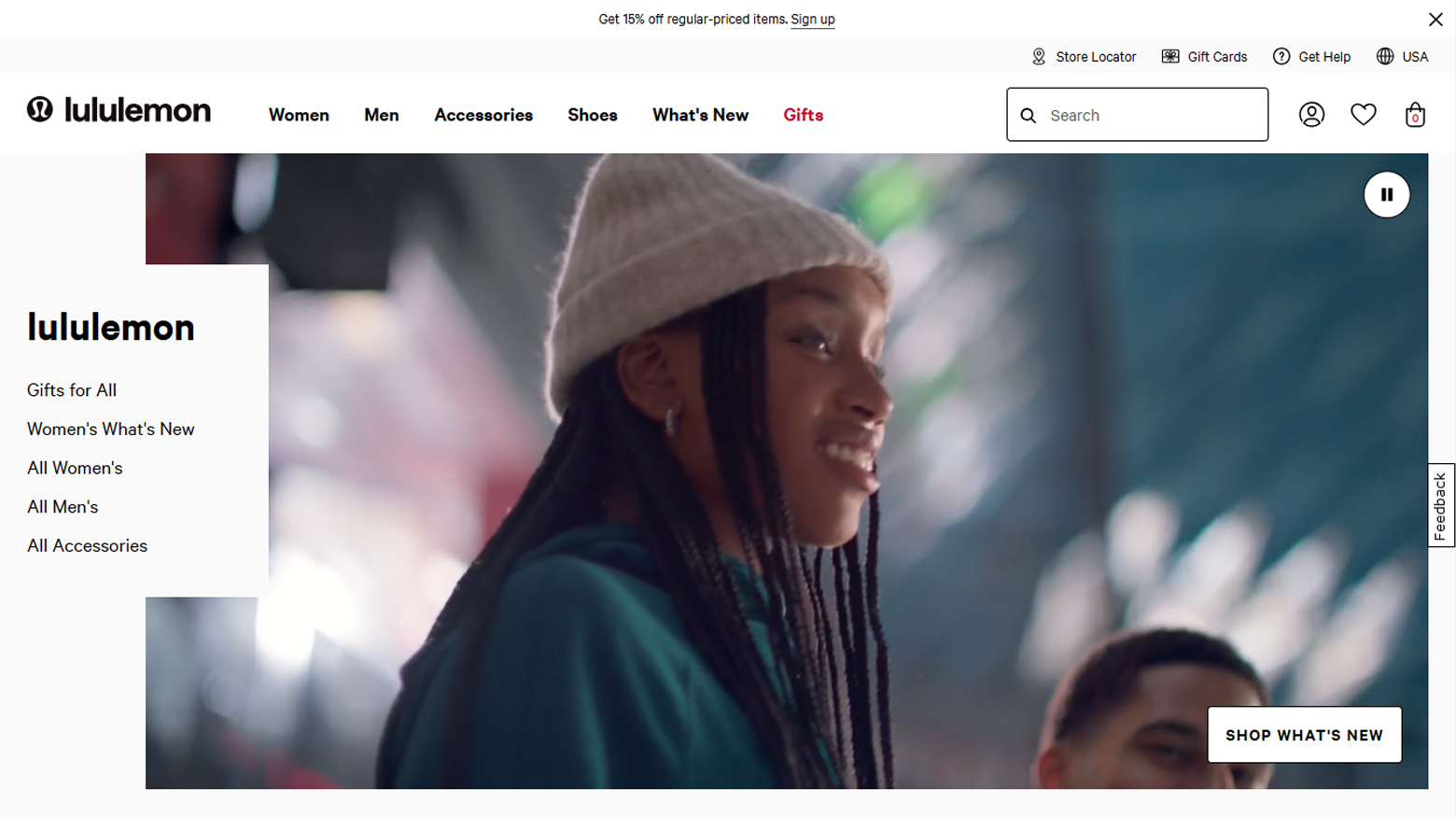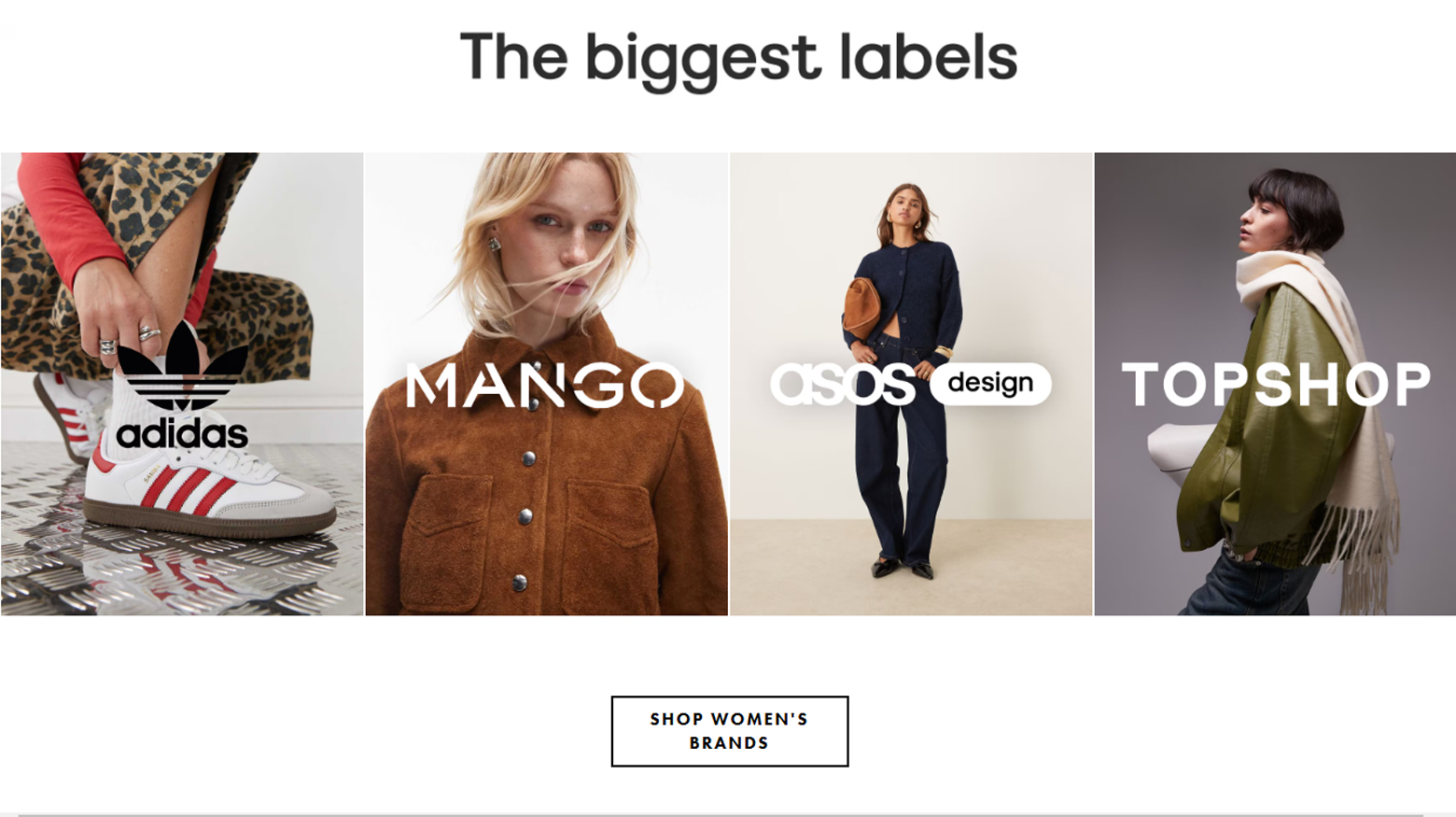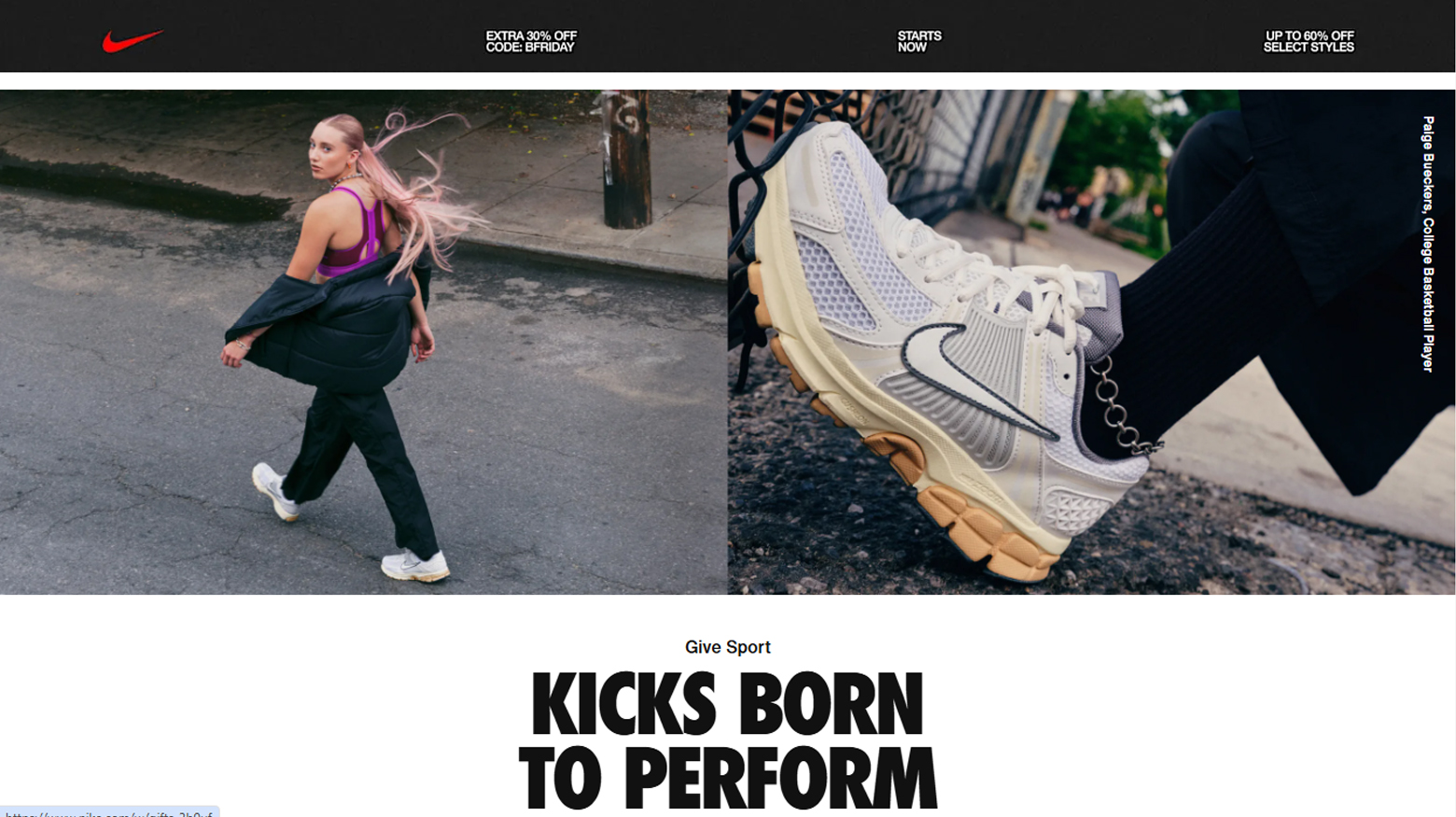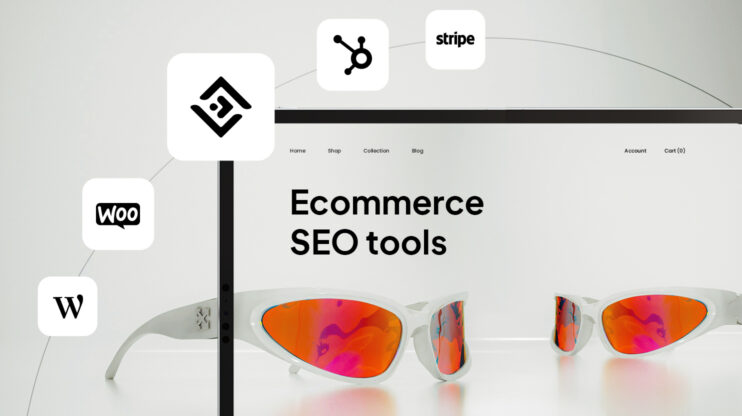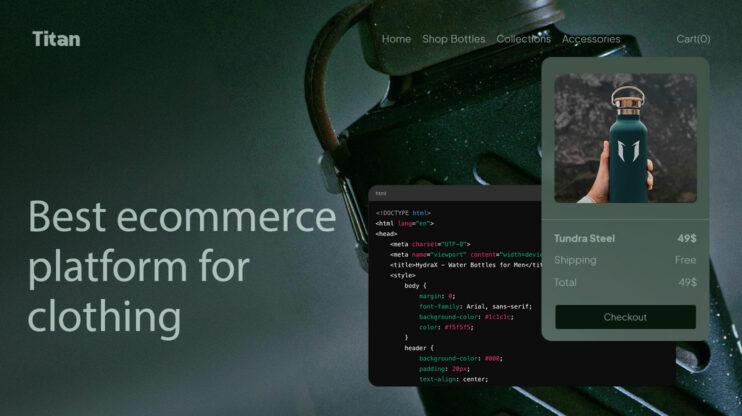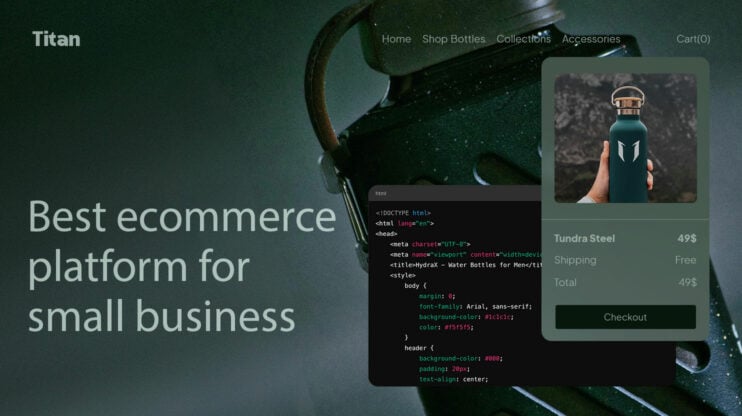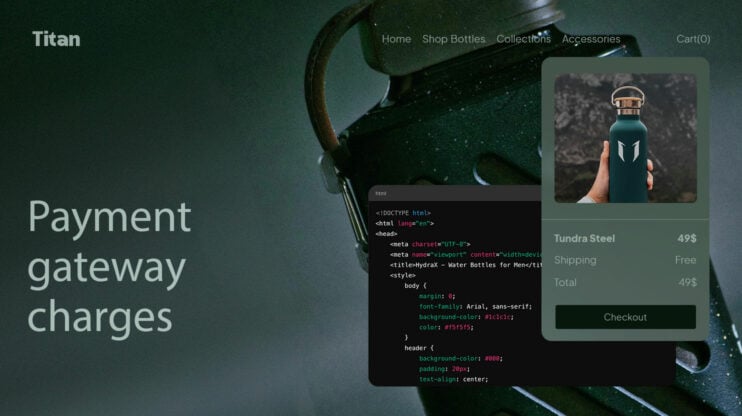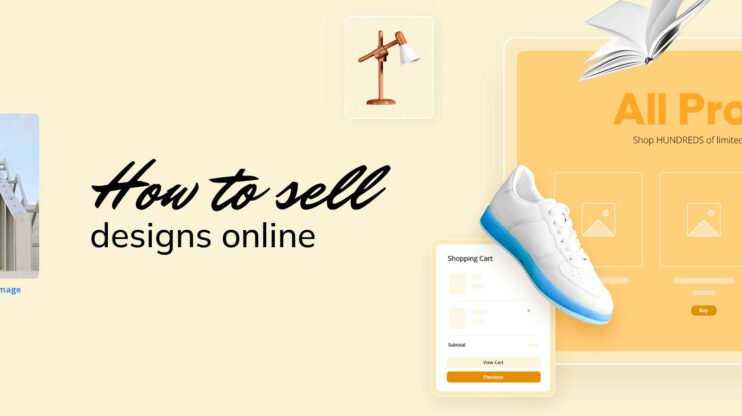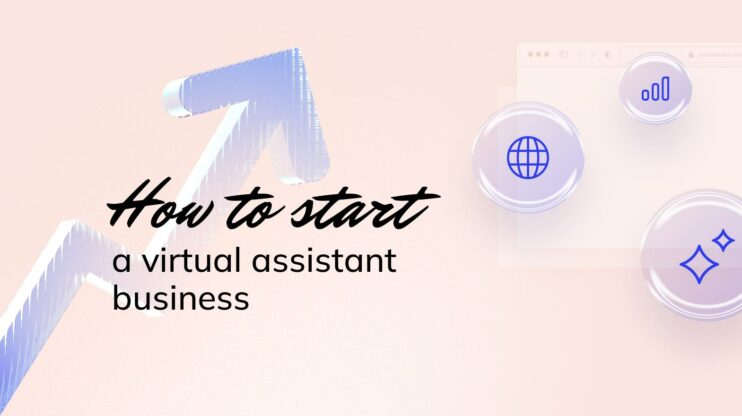A good ecommerce website design plays a big role in your online business success. A good design can make shopping easier and more fun for customers and can enhance brand trust. It helps businesses sell more products and keep customers happy. It’s about creating a site that has clear product photos, easy-to-use menus, and simple checkout steps.
In this guide, we’ll cover the principles of ecommerce website design, such as: user-friendly layouts, visual design, SEO optimization, technical considerations, and platform-specific features to build successful ecommerce websites. We will also take a look at the top websites to look at for ecommerce website design.
FAQ
How much does a custom site cost?
Custom site costs vary widely, typically ranging from $5,000 to $100,000+, depending on complexity and features. Factors influencing price include design uniqueness, functionality requirements, and the size of the product catalog. Small businesses can start with simpler solutions, while large enterprises may need more sophisticated, custom-built platforms.
What platform is best for beginners?
For beginners, 10Web and WooCommerce (a WordPress plugin) are excellent platforms to start with. They offer user-friendly interfaces, numerous templates, AI website generation, and built-in features that simplify the process of setting up an online store. Both platforms also have extensive support communities and resources for learning.
What features are essential?
Essential features for an ecommerce website include a product catalog, shopping cart, secure checkout process, and search function. Mobile responsiveness is crucial, as a significant portion of online shopping occurs on mobile devices. Advanced features like product recommendations, customer reviews, and wish lists can enhance the user experience.
How long does design take?
The design process typically takes 1-3 months for a basic site, but can extend longer for complex projects. This timeline includes planning, design, development, testing, and launch phases. Factors such as the number of products, custom features, and client feedback rounds can impact the overall duration.
What's the ideal structure?
An ideal ecommerce site structure includes clear navigation, logical product categorization, and a prominent search bar. The homepage should highlight featured products or categories, while product pages should provide detailed information and high-quality images. A streamlined, easy-to-use checkout process is crucial for reducing cart abandonment.
How to optimize for mobile?
To optimize for mobile, use responsive design that adapts to different screen sizes. Optimize images for faster loading, simplify navigation for touch interfaces, and ensure buttons and links are easily tappable. Test thoroughly on various devices to ensure a consistent, user-friendly experience across all platforms.
Which payment gateways should I include?
Common payment gateways to include are PayPal, Stripe, and Square, which are widely used and trusted. Consider adding region-specific options like Alipay for China or iDEAL for the Netherlands if targeting international markets. Offering multiple payment options can increase conversion rates by catering to customer preferences.
How to improve conversion rates?
To improve conversion rates, use clear calls-to-action, high-quality product images, and user reviews to build trust. Streamline the checkout process to reduce abandonment, and implement personalized product recommendations based on browsing history. Regularly analyze user behavior and A/B test different elements to continually optimize your site’s performance.
Looking to sell online? Develop and launch your store with 10Web AI Ecommerce Website Builder.
Create your online store in minutes!
Understanding ecommerce website design
Ecommerce website design combines visual appeal with functional elements to create online stores that attract and convert customers. It focuses on making shopping easy and enjoyable for users while meeting business goals.
Key principles of effective design
A good ecommerce design starts with a clean, uncluttered layout. This helps shoppers focus on products without distractions. Use white space to separate elements and make the page easier to scan.
Clear product images are a must. Show items from multiple angles and in use. Add zoom features so customers can see details up close.
Make navigation simple. Use clear categories and a search bar. Add filters to help users find exactly what they want quickly.
Design your site to work well on all devices. More people shop on phones now, so mobile-friendly design is key.
Use colors that match your brand. Pick fonts that are easy to read. Make sure buttons stand out so users know where to click.
Role of user experience (UX) in ecommerce
UX design aims to make shopping online smooth and pleasant. A good UX can boost sales and keep customers coming back.
Start by mapping out the customer journey. Think about each step from landing on your site to completing a purchase. Look for ways to remove friction at every point.
Make product pages informative and easy to understand. Include clear descriptions, specs, and customer reviews. Add videos or 360-degree views to give shoppers a better sense of the item.
Streamline the checkout process. Offer guest checkout and save payment info for faster future purchases. Show progress bars so users know how many steps are left.
Test your site with real users. Watch how they interact and listen to their feedback. Use this info to keep improving the experience.
Key ecommerce website design elements
Visual design shapes how customers see and feel about your online store. It goes beyond looks to affect user experience and sales. Good design makes shopping easy and enjoyable.
Building a successful ecommerce website also involves key technical factors. These elements can make or break your online store’s performance and user experience. In the following section, we will take a look at these elements of ecommerce website design.
Color schemes and branding
Pick colors that match your brand and products. Use a main color with 1-2 accent colors. This creates a cohesive look across your site. Bright colors can draw attention to sales or new items. Softer hues work well for luxury goods.
Your color choices affect how shoppers feel. Blue builds trust, while red creates urgency. Green suits eco-friendly brands. Test different combos to see what works best.
Make sure text is easy to read against background colors. High contrast helps shoppers scan info quickly. Here are some things to consider:
- Color psychology influences buying decisions
- Brand colors should be consistent across all pages
- Use color to highlight important elements like buttons
Typography choices for ecommerce
Font selection impacts readability and brand image. Sans-serif fonts like Arial or Helvetica are clean and modern. Serif fonts like Times New Roman feel more traditional.
Use no more than 2-3 fonts on your site. Too many can look messy. Pick one for headings and another for body text. Make sure they pair well together.
Font size matters too. Headings should be larger to stand out. Body text needs to be big enough to read easily on all devices.
Proper line spacing helps shoppers skim content. Leave enough white space to avoid a cluttered look.
SEO best practices
SEO helps your ecommerce site rank higher in search results. Use clear, unique product titles and descriptions with relevant keywords. Add alt text to images so search engines can understand them. Create a logical site structure with categories and subcategories. Use friendly URLs that include keywords. Make your site mobile-friendly, as Google prioritizes mobile-optimized sites. Add schema markup to help search engines understand your content better. Create a sitemap to help search engines crawl your site more easily.
Site speed and performance
Fast-loading pages are vital for keeping customers on your site. Optimize image sizes without losing quality. Use a content delivery network (CDN) to serve files from servers close to users. Minimize HTTP requests by combining files where possible. Enable browser caching so returning visitors load pages faster. Use a reliable web host with good uptime and speed. Test your site’s speed regularly and fix any issues. Consider using AMP (Accelerated Mobile Pages) for faster mobile loading.
Responsive layout
A responsive layout is key for ecommerce websites. It makes your site look good on all devices. This means customers can shop easily on phones, tablets, and computers.
You need to use flexible grids and images. These adjust to fit different screen sizes. Your menus should also change for smaller screens. This might mean using a hamburger menu on phones.
Text and buttons need to be big enough to read and tap on mobile. You should test your site on many devices. This helps catch any layout issues.
A responsive design can boost your sales. Many people shop on their phones now. If your site works well on mobile, more people will buy from you.
Some other features of responsive ecommerce design:
- Simplified navigation for mobile
- Touch-friendly buttons and links
- Quick-loading images
- Easy-to-use mobile checkout process
Fast loading pages
Quick-loading pages are key for ecommerce sites. Customers get frustrated when pages take too long to appear. Even a few seconds can make a big difference. Faster pages lead to more sales and happy shoppers.
You can speed up your pages in several ways. Use smaller image files that still look good. Get rid of unnecessary code. Use a content delivery network to serve files from servers close to your customers.
Test your page speed often. Tools like Google PageSpeed Insights can help. They show you what’s slowing things down. Fix those issues to keep your site speedy.
Fast pages also help with search rankings. Google likes quick sites. This means more people can find your store when searching online.
Looking to sell online? Develop and launch your store with 10Web AI Ecommerce Website Builder.
Create your online store in minutes!
Clear call-to-actions
Clear call-to-actions (CTAs) are key for ecommerce success. You need to make it easy for customers to take action. Use simple, direct language that tells people what to do. For example, say Buy now or Add to cart instead of vague phrases.
Make your CTAs stand out visually. Use contrasting colors and button shapes that grab attention. Place them where users can easily see and click them.
Test different CTA text and designs to see what works best. Try variations like Get yours or Shop now to find what resonates with your audience. Keep track of which ones lead to more sales.
Don’t overwhelm shoppers with too many options. Focus on one main action you want them to take on each page. This helps guide customers through your site smoothly.
User-friendly navigation
Good navigation helps shoppers find what they want quickly. A clear menu at the top of your site is key. Group items into easy-to-understand categories. Use dropdown menus to show subcategories without cluttering the page.
Add a search bar that’s easy to spot. Make sure it works well and gives helpful results. Include filters so people can narrow down their choices. This is especially useful for sites with lots of products.
Make your site work well on phones too. A hamburger menu (three lines) can save space on small screens. Test your navigation on different devices to make sure it’s always easy to use.
Some other helpful features for navigation:
- Breadcrumbs to show where you are on the site
- Recently viewed items
- Wishlist or favorites option
- Quick view for product details
- Back-to-top button on long pages
High-quality images
Good photos are key for online stores. You need clear, sharp pictures that show off your products. Use bright lighting and clean backgrounds. This helps customers see what they’re buying.
Mix up your image types. Show products from different angles. Add close-ups of important features. Include lifestyle shots of people using the items. This gives shoppers a better idea of size and use.
Make sure your images load fast. Slow-loading pictures can make people leave your site. Use the right file formats and sizes for quick loading.
Don’t forget about mobile users. Your photos should look good on small screens too. Test how they appear on phones and tablets.
Some other image features to think about:
- Zoom options
- 360-degree views
- Color swatches
- Size charts
- Video demos
Seo optimization
Good SEO helps more people find your online store. You want to use keywords that shoppers search for. Put these words in your product names, descriptions, and page titles. Make sure each page has a clear topic. Use simple web addresses that include keywords.
Your site structure matters too. Group similar items together. Link between related products. This helps search engines understand your site better. It also makes it easier for shoppers to find what they want.
Content is key for SEO. Write helpful product descriptions. Add buyer guides and how-to articles. This gives search engines more text to analyze. It also keeps shoppers on your site longer.
Don’t forget about images. Use descriptive file names and alt text. This helps search engines know what your pictures show. Fast loading times are important too. Compress your images to speed up your site. Other steps to take for SEO optimization:
- Optimize meta titles and descriptions
- Create unique content for each product
- Build high-quality backlinks
- Improve site speed and mobile-friendliness
- Use schema markup for rich snippets
Looking to sell online? Develop and launch your store with 10Web AI Ecommerce Website Builder.
Create your online store in minutes!
Role of technology in modern ecommerce
Technology shapes how online stores work and sell products. It makes shopping easier for customers and helps businesses run smoothly.
Integration with AI and machine learning
AI and machine learning help ecommerce sites understand shoppers better. These tools look at what you buy and like. Then they show you items you might want.
AI chatbots answer your questions fast. They help you find products and solve problems. This saves time for both you and the store.
Machine learning spots trends in sales data. It helps stores know what to stock up on. It also finds ways to cut costs and boost profits.
Use of AR for enhanced product interaction
Augmented reality (AR) lets you see how items look in your space before buying. You can use your phone to place furniture in your room. Or try on clothes without leaving home.
AR makes online shopping more like being in a store. You can turn products around and zoom in. This helps you make better choices.
Some makeup brands let you try on colors with AR. Eyewear sites show how glasses fit your face. This cuts down on returns and makes you happier with what you buy.
Top ecommerce website designs that convert
The best ecommerce sites turn visitors into customers. This happens through smart design, easy navigation, and features that encourage buying. This section explores the top 23 ecommerce website designs.
Amazon
Amazon is a top ecommerce site known for its user-friendly design. The homepage shows you personalized product recommendations based on your browsing history. You can easily search for items using the search bar at the top of the page.
Product pages on Amazon give you lots of details. You’ll see high-quality images, prices, and customer reviews. The Buy Now and Add to Cart buttons stand out, making it simple to make a purchase.
Amazon uses social proof to build trust. You can read customer reviews and see product ratings. The site also shows you related items you might like.
Key features
- One-click ordering option
- Prime membership benefits highlighted
- Customer questions and answers section
- Wish list feature
- Mobile app for shopping on the go
eBay
eBay is a giant in the ecommerce world. You’ll find a user-friendly interface that makes buying and selling easy. The homepage showcases popular items and deals to catch your eye.
Search filters help you narrow down products quickly. Product pages give you clear info on condition, price, and shipping. You can see seller ratings and reviews to build trust.
eBay uses a mix of auction and fixed-price formats. This gives you options for how you want to buy. The site has a global reach, letting you shop from sellers worldwide.
Key features
- Mobile-friendly design
- Personalized recommendations
- Secure payment system
- Buyer protection policies
- Category-specific search features
Etsy
Etsy is a popular online marketplace for handmade, vintage, and unique items. It lets crafters and artists sell their creations directly to buyers. The site’s design is simple and easy to use.
Etsy’s product pages show clear images and detailed descriptions. They highlight the item’s features and benefits. Customer reviews add trust and help buyers decide.
The site uses smart search tools to help you find what you want. You can filter by price, color, and more. This makes shopping easier and faster.
Etsy also has a mobile app. It lets you browse and buy on the go. The app has most of the same features as the website.
Key features
- Seller profiles with ratings
- Easy payment options
- Custom order requests
- Gift wrapping choices
- Favorite lists for later
Looking to sell online? Develop and launch your store with 10Web AI Ecommerce Website Builder.
Create your online store in minutes!
Walmart
Walmart’s website stands out as a top ecommerce platform. It offers a clean, user-friendly design that makes online shopping easy. The site’s layout is simple and organized, helping you find what you need quickly.
Product pages on Walmart.com are packed with useful information. You’ll see clear product images, detailed descriptions, and customer reviews. These elements help you make informed buying decisions.
The site uses smart search and filtering options. This lets you narrow down products by price, brand, or features. You can also compare items side-by-side to pick the best one for you.
Walmart.com shines in its mobile version too. The site adapts well to smaller screens, keeping the shopping experience smooth on phones and tablets.
Key features
- Easy checkout process
- Multiple payment options
- Free shipping on many items
- In-store pickup choice
- Product recommendations
- Customer Q&A sections
AliExpress
AliExpress is a popular online marketplace that connects buyers with sellers worldwide. You’ll find a vast range of products at competitive prices on this platform. The website’s design is user-friendly, with a clean layout and easy navigation.
When you visit AliExpress, you’ll see a search bar at the top and product categories below. The homepage showcases featured deals and trending items to catch your eye. Product pages include clear photos, detailed descriptions, and customer reviews to help you make informed choices.
AliExpress uses smart features to boost sales. You’ll often see countdown timers for flash deals, creating a sense of urgency. The site also shows how many items have been sold, which can build trust in popular products.
Key features
- Mobile-friendly design
- Multiple payment options
- Buyer protection program
- Personalized product recommendations
- In-app messaging for buyer-seller communication
Bestbuy
Best Buy’s website shows how a big electronics retailer can succeed online. You’ll find a clean, easy-to-use design that helps you shop quickly. The site groups products into clear categories, making it simple to find what you need.
Product pages on Bestbuy.com give you lots of helpful info. You’ll see big photos, detailed specs, and customer reviews. This makes it easier to decide what to buy. The site also suggests related items you might like.
Best Buy uses smart tactics to boost sales. You’ll often see deals and special offers right on the product pages. The site also lets you compare different models side-by-side. This helps you pick the best option for your needs and budget.
Key features
- Fast, free shipping on many items
- In-store pickup option
- Price matching
- Easy returns
- Geek Squad tech support
Zappos
Zappos.com stands out as a top ecommerce website for shoes and clothing. You’ll find a clean, user-friendly design that makes shopping easy. The site uses large product images and detailed descriptions to help you make informed choices.
When you visit a product page, you’ll see multiple photos from different angles. This lets you examine items closely before buying. Customer reviews are front and center, giving you real feedback from other shoppers.
Zappos makes finding your size simple with a size chart on every product page. You can also filter search results by size, color, and price to narrow down options quickly.
The site offers free shipping and a 365-day return policy. This builds trust and encourages you to try items risk-free. Zappos also has a rewards program, giving you points for purchases.
Key features
- Clear navigation menu
- Detailed product specifications
- Live chat customer support
- Mobile-friendly design
- Personalized product recommendations
Wayfair
Wayfair’s website makes shopping for home goods easy. You’ll find a clean design with simple navigation. The search bar stays at the top as you scroll, so you can always find what you need.
Product pages on Wayfair give you lots of info. You get clear photos, detailed descriptions, and customer reviews. This helps you make smart choices about furniture and decor.
Wayfair uses cool tech to help you shop. You can use an augmented reality tool to see how items will look in your home. There’s also a room planning tool to design your space.
The site makes buying simple with clear pricing and shipping details. You can easily compare products and find the best deals.
Key features
- Mobile-friendly design
- Personalized product recommendations
- Visual search feature
- Wish list function
- Customer photos in reviews
- 3D product viewer
Chewy
Chewy.com is a top pet supply website. It has a simple, user-friendly design that makes shopping easy. The homepage shows cute pet photos and clear categories for different animals.
You can find products quickly with the search bar or menu. Each product page has big images, detailed info, and customer reviews. This helps you make good choices for your pets.
Chewy uses colors and fonts that match its brand. The blue and white design is clean and easy to read. You’ll see fun pet-themed graphics throughout the site.
The site works well on computers and phones. You can shop anytime, anywhere. Chewy offers free shipping on orders over $49, which is a nice perk.
Key features
- Easy navigation by pet type
- Clear product descriptions and photos
- Customer reviews on product pages
- Mobile-friendly design
- Free shipping offers
Booking
Booking.com stands out as a top ecommerce site for travel accommodations. The homepage greets you with a simple search bar, making it easy to start your booking journey.
As you browse, you’ll notice clear property descriptions and high-quality photos. These help you picture your stay and make informed choices. The site uses customer reviews to build trust and help you decide.
Booking.com’s calendar tool is user-friendly. It shows available dates and price changes, helping you pick the best time for your trip. The site also highlights special deals and discounts to save you money.
When you’re ready to book, the checkout process is straightforward. You can see all costs upfront, with no hidden fees. The site offers various payment options for your convenience.
Key features
- Map views of properties
- Filters for amenities and price
- Mobile app for on-the-go bookings
- 24/7 customer support
- Reward program for frequent users
Looking to sell online? Develop and launch your store with 10Web AI Ecommerce Website Builder.
Create your online store in minutes!
Overstock
Overstock is a popular online retailer known for its wide selection of home goods and furniture. The site’s design is clean and easy to navigate, with a focus on showcasing products through high-quality images.
You’ll find a search bar at the top of the page, making it simple to find what you’re looking for. The homepage features rotating banners highlighting current sales and promotions, catching your eye as soon as you arrive.
Product pages on Overstock.com are well-organized. They include clear product descriptions, multiple images, and customer reviews. You can easily see pricing, shipping information, and available colors or sizes.
The site uses a grid layout to display multiple products, allowing you to quickly browse through options. Each item has a clear Add to Cart button, making the buying process straightforward.
Key features
- Wishlist function
- Customer Q&A section
- Email signup for deals
- Mobile-friendly layout
- Product recommendations
Lululemon
Lululemon showcases athleisure wear with style. The site’s clean design puts products front and center. Large, high-quality images show clothes on models in action. This helps you picture how items will look and feel.
Product pages have clear, concise descriptions. They focus on key benefits and features. Sizing guides and fabric details make choosing easier. Customer reviews add trust and help with decisions.
The site uses subtle promotional tactics. A We Made Too Much section offers deals without seeming pushy. Free shipping and easy returns are prominently displayed to boost confidence.
Navigation is simple with clear categories. The search function works well, helping you find items quickly. A wishlist feature lets you save favorites for later.
Key features
- Mobile-friendly design
- Video content for some products
- Customizable gift cards
- Store locator tool
- Live chat support
Newegg
Newegg is a top electronics retailer. You’ll find a wide range of tech products on their site. The homepage greets you with deals and featured items.
Product pages on Newegg are packed with info. You’ll see clear photos, detailed specs, and customer reviews. Prices are easy to spot, and you can compare similar items.
Newegg uses smart design to help you shop. The search bar is front and center. Categories are neatly organized in the menu. You can filter results to find exactly what you need.
The site makes buying simple. Add items to your cart with one click. Checkout is quick and secure. You can track your order right from your account.
Key features
- Daily deals section
- Wish list function
- Customer Q&A on product pages
- Mobile-friendly layout
- Build your own PC tool
Ikea
Ikea’s website stands out for its user-friendly design and smart ecommerce features. The homepage greets you with clean layouts and eye-catching product images. You can easily browse categories or use the search bar to find what you need.
Product pages on Ikea.com shine with high-quality photos and 360-degree views. You’ll see clear prices, color options, and stock availability. The site offers helpful buyer’s guides and room planning tools to make your shopping easier.
Ikea uses smart tactics to boost sales. You’ll spot “frequently bought together” suggestions and bundle deals. The site remembers your cart items, making it simple to pick up where you left off.
Key features
- Virtual room planner
- AR furniture placement app
- Click and collect option
- Wish list function
- Customer reviews and ratings
- Live chat support
Modcloth
ModCloth stands out as a fun and quirky ecommerce site for vintage-inspired fashion. You’ll notice their playful brand personality shining through in their product names and descriptions. The site uses bright colors and retro-inspired graphics to create a unique shopping experience.
When you browse ModCloth’s product pages, you’ll find detailed descriptions that highlight the benefits of each item. They use lifestyle photos to show how clothes look on real people. Customer reviews are front and center, helping you make informed choices.
The site makes it easy to shop by size, style, or occasion. You can filter results quickly to find exactly what you’re looking for. ModCloth also offers styling tips and outfit ideas to inspire your purchases.
Key features
- Eye-catching product photography
- Size-inclusive model photos
- Curated collections for different styles
- User-friendly search and filter options
- Customer photo gallery
Asos
ASOS is a major online fashion retailer. Their website stands out with its clean design and user-friendly layout. When you visit ASOS.com, you’ll find a simple search bar at the top. This makes it easy to find what you’re looking for.
The product pages on ASOS are well-organized. They show clear images of clothes from different angles. You can also see how items look on models. This helps you picture how the clothes might fit you.
ASOS uses smart features to help you shop. They have a “buy the look” option. This lets you buy a whole outfit with one click. They also show you similar items you might like.
The site has a mobile app too. It works just as well as the website. You can shop on your phone or computer with the same ease.
Key features
- Easy navigation with clear categories
- Size guide and fit assistant
- Customer reviews and ratings
- Wishlist feature
- Free delivery and return options
Looking to sell online? Develop and launch your store with 10Web AI Ecommerce Website Builder.
Create your online store in minutes!
Urbanoutfitters
Urbanoutfitters has a cool, trendy vibe that matches its young adult target market. The site uses large, high-quality images to showcase products in real-life settings. This helps you picture how items might look in your own life.
Product pages are simple but effective. You’ll find clear product descriptions, sizing info, and multiple photos. The site also shows you how other shoppers have styled items through user-generated content.
Urbanoutfitters.com makes shopping easy with features like quick view options and a wishlist function. You can also see related items and complete the look suggestions.
The site uses subtle promotions like free shipping offers and student discounts to encourage purchases. These deals are shown without being too pushy.
Key features
- Mobile-friendly design
- Easy-to-use search and filter options
- Customer reviews on product pages
- Size guide and fit information
- Multiple payment options including Afterpay
Footlocker
Footlocker gives you a smooth shopping trip for athletic shoes and clothes. The site uses big, clear photos to show off its products. You’ll see shoes from different angles, helping you decide.
The site’s layout is simple. You can find what you want fast. Product pages have lots of info to help you choose. You’ll see sizes, colors, and prices right away.
Footlocker.com makes buying easy. You can check out as a guest or make an account. The site offers many ways to pay, like credit cards and PayPal.
Key features
- Virtual try-on for some shoes
- Shop by sport or brand
- Customer reviews
- Wish list feature
- Free shipping offers
Sephora
Sephora’s website sets a high bar for beauty ecommerce. You’ll find a clean, visually appealing design that puts products front and center. The site uses large, high-quality images and videos to showcase cosmetics in action.
Product pages on Sephora.com give you all the info you need to make smart choices. You can read detailed descriptions, see ingredient lists, and check out customer reviews. The site also offers personalized recommendations based on your skin type and preferences.
Sephora makes shopping easy with features like virtual try-on tools and shade finders. You can save your favorite items to a wishlist or compare different products side-by-side. The site often runs special deals and offers free samples with purchases.
Key features
- Mobile-friendly design
- Easy-to-use search filters
- Beauty Insider rewards program
- Live chat customer support
- In-store pickup option
Nike
Nike’s website shows why it’s a top sports brand. The site is easy to use and looks good. You can find what you want fast. The home page has big pictures that catch your eye.
Product pages on Nike.com are well-made. They show clear photos of shoes and clothes from different angles. You can zoom in to see details. Each item has a good description that tells you what’s special about it.
Nike uses smart ways to get you to buy. They often have deals like free shipping. The site also shows you what other people bought. This can help you decide what to get.
The site works well on phones too. You can shop on the go without any trouble. Nike makes it simple to buy their stuff online.
Key features
- Clean design with bold colors
- Easy-to-use search and filters
- Customer reviews for each product
- Size guides to help you choose
- Option to customize some products
Adidas
Adidas stands out as a top ecommerce website. The site uses a clean black and white design that matches their brand. You’ll find it easy to navigate and shop for products.
The homepage grabs your attention with big images of athletes and new products. You can quickly find what you’re looking for using the menu at the top.
Product pages on Adidas.com are full of details. You’ll see multiple photos of each item from different angles. The site also includes videos to show products in action.
Adidas makes it simple to choose the right size. They provide size charts and fit recommendations based on customer reviews.
The site offers personalization options too. You can customize some shoes with your own colors and designs.
Key features
- Easy-to-use search function
- Customer reviews and ratings
- Wish list feature
- Free shipping offers
- Mobile-friendly design
Macy’s
Macy’s website offers a mix of products across many categories. You can find clothes, home goods, and more. The site has a clean look with a focus on images. Product pages show multiple photos and give key details.
When you shop, you’ll see customer reviews to help you decide. Macy’s also suggests related items you might like. The search bar at the top makes it easy to find what you want.
Macy’s uses sales and deals to attract shoppers. You’ll often see discounts and special offers on the site. The checkout process is straightforward, letting you buy items quickly.
The website works well on phones and computers. This means you can shop from anywhere. Macy’s also has a rewards program to thank loyal customers.
Key features
- Clear product categories
- Easy-to-use search function
- Mobile-friendly design
- Customer reviews on products
- Suggestions for similar items
- Frequent sales and promotions
Platforms and tools for ecommerce design
Building a successful online store starts with selecting the right ecommerce platform and tools that fit your business needs. Platforms like Shopify, BigCommerce, PrestaShop, and 10Web Ecommerce AI Builder offer different ecommerce website templates and tools to meet various business requirements. Shopify is known for its reliable SaaS stability and many app integrations, which let you add third-party apps easily.
BigCommerce has strong payment processing options and supports digital wallets, making payments easy for customers. If you want more control, PrestaShop provides open-source flexibility, allowing you to customize your store to fit your unique needs.
10Web Ecommerce AI Builder uses artificial intelligence to help you build and design your store quickly. Many of these platforms include easy-to-use website builders that make designing your site simple. With smooth app integrations and support for digital wallets, your store will have the latest features.
Looking to sell online? Develop and launch your store with 10Web AI Ecommerce Website Builder.
Create your online store in minutes!
Conclusion
This guide explored essential principles like user-friendly layouts, responsive design, SEO optimization, fast load times, and clear navigation to create a seamless shopping experience. Additionally, it highlighted the importance of visual elements, technical considerations, and integrating modern technology like AI and AR.
Examining examples from top ecommerce platforms provided actionable insights into successful design features, including clear CTAs, high-quality images, and mobile-friendly layouts. Armed with this knowledge, you can create or improve your ecommerce site to attract customers, boost sales, and enhance user satisfaction.


